Amelia Earhart lands in fields in Co Londonderry
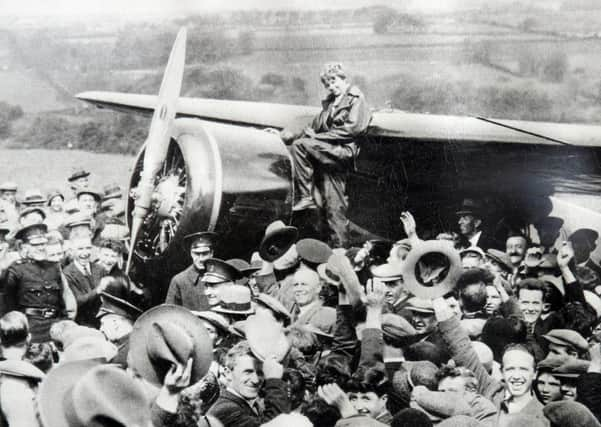

But in May 1932, some 89 years ago, is was a much more greater adventure than it is today, with pioneering flights across the Atlantic Ocean. In May 1932 Northern Ireland and Londonderry was written into aviation history by aviatrix Miss Amelia Earhart, who during this week that year became the first solo woman to fly across the Atlantic from Harbour Grace, New Foundland, in Canada. Northern Ireland wasn’t her planned destination, that was Paris, and the province was fortunate that she was forced to land in fields near Ballyarnett Racecourse, Londonderry.
Earhart, reported the Reuters wire, had left Teterboro Aerodrome, New Jersey, for Canada, on Thursday, May 19, 1931 and she was accompanied on this first stage of the flight by the Norwegian aviator, Bernt Balchen, acting as her mechanic. The flight, noted the wire reports, was being financed by the Earhart’s husband, Mr George Palmer Putnam, the well-known American publisher and author.
SURPRISE START FROM HARBOUR GRACE
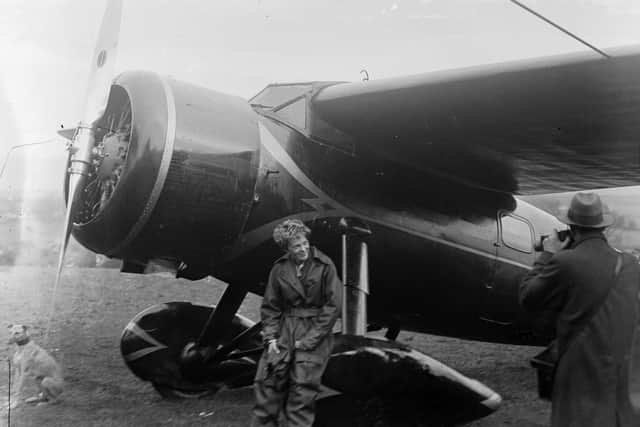

Advertisement
Hide AdAdvertisement
Hide AdAt 11.20pm United Kingdom time, Earhart took off from Harbour Grace for her flight across the Atlantic Ocean.
The Reuters wire reported: “Miss Eahart surprised everybody by taking off 7.20pm (Eastern standard time). There was a south westerly wind blowing, and the weather was cloudy. Her red gold ‘plane soared easily into the skies, despite its heavy load of fuel. She rapidly disappeared eastwards. Her machine is a 600hp monoplane, with a cruising speed of 140mph and a radius of 3,200 miles.”
The report added: “This is not Miss Earhart’s first experience of an ocean flight, as she crossed the Atlantic in an aeroplane four years ago, and was the first woman to do so. On that occasion she was a passenger in the seaplane Friendship, which was piloted by two American airmen, Mr Wilmer Stultz and Mr Louis Gordon. They made a force landing just off the coast of Carmarthenshire.”
Reflecting on the experience of Earhart for undertaking the solo ocean crossing Reuters commented: “Miss Earhart has done plenty of flying on her own, and in 1931 completed the first flight from the Atlantic to the Pacific and back in an Antegiro.
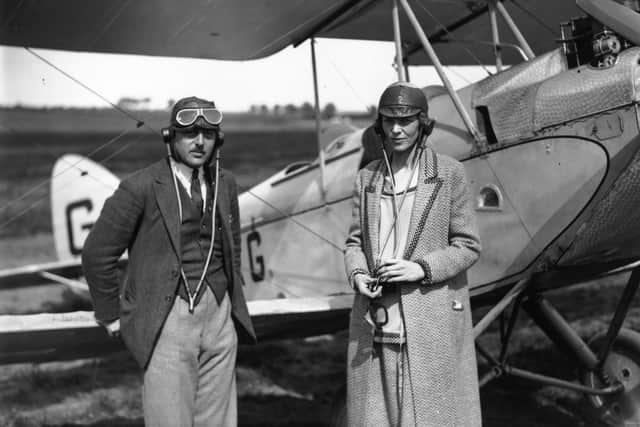

Advertisement
Hide AdAdvertisement
Hide Ad“Should she succeed in her transatlantic flight she will have accomplished it on the fifth anniversary of Lindbergh’s historic flight.”
EARHART SENDS ‘CABLEGRAM’ FROM POST OFFICE
No sooner had hundreds of Londonderry citizens read in the morning papers an account of the start of Miss Earhart’s lone flight, that the intrepid airwoman had achieved her ambition, and was in their midst.
At about 1.30pm the hum of an aeroplane was heard above the city, and spectators gazing skywards saw a bright red machine circling around, rising and falling as if the flyer was seeking a suitable place at which to descend. Then the plane skirted the northern end of the city and disappeared from sight at a spot about two miles distant in the direction of Culmore.
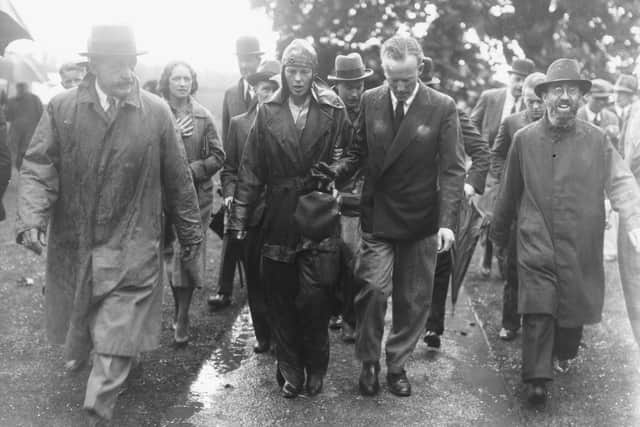

Soon the news spread that it was no less a person that Miss Earhart herself, “the dauntless American aviatrix”. Confirmation of the news was quickly forthcoming when Miss Earhart, who was recognised by the photographs appearing in the newspapers that morning, was seen entering a post office. She had come there to send a “cablegram” to an anxious husband in New York, assuring him that had cross successfully, and, although had to make a force landing near Londonderry, that she was “well and unharmed”.
Advertisement
Hide AdAdvertisement
Hide AdIn less than a hour her plane, which had come to land in a spacious field on the farm of Mr Robert Gallagher, Springfield, was surrounded by hundreds of curious sightseers, whom the police had to keep at a safe distance.
Miss Earhart smilingly assured all that she was unhurt, her forced landing having given rise to apprehension that she might had suffered injury in the descent. “No,” she said, “I am not hurt, and neither, I am glad to say, is my machine. I made, I think, a fairly good landing, although I had not the least idea where I was.”
The field where the machine landed commanded a glorious view of woodland and water, with its central feature the charmingly situated church at Ballyarnett nestling in the trees and the Foyle spreading out in the distance. It was a panorama, the equal of which Miss Earhart admitted afterwards she had seldom witnessed. Glancing around before alighting from the cockpit of her plane, she exclaimed: “Surely this must be the prettiest spot in Ireland.”
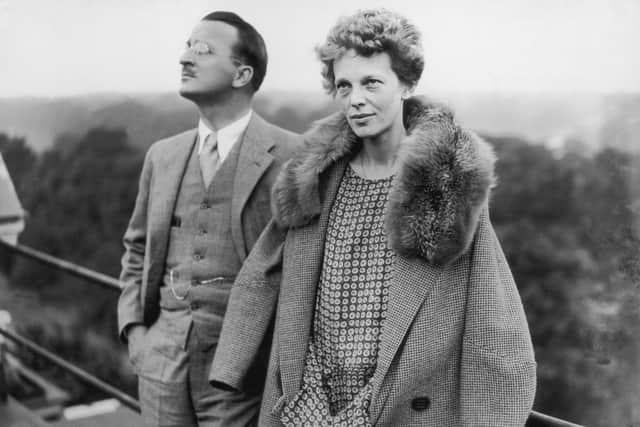

The first man to greet Earhart after she touched down in Londonderry was a man called McCallion.
Advertisement
Hide AdAdvertisement
Hide AdHe told local press representatives: “I thought it was Amy Johnson, and when she stopped I asked her if she had flown far. When she replied, ‘It was from the States’, I was so dumbfounded that I could hardly speak, because I did not know of any woman having left the States to fly the Atlantic. I had not seen the papers.”
Mr McCallion expressed his admiration at the manner in which Miss Earhart had managed her plane. He said: “I don’t know much about such machines, but she seemed certainly to be an expert. She told me she came into the field at seventy miles, and when I was sure that she was about to crash into the cottages she wheeled round to the left and stopped.”
GRAPHIC ACCOUNT OF FLIGHT
After landing her plane at Ballyarnett Miss Earhart gave an graphic account to press representatives of her flight across the Atlantic Ocean.
She recalled how when about four hours out from Harbour Grace her exhaust had shown signs of a defect, but although flames were issuing from a large hole she had decided that it was equally as safe to carry on as return, and run the risk of landing in darkness in the small hours of the morning.
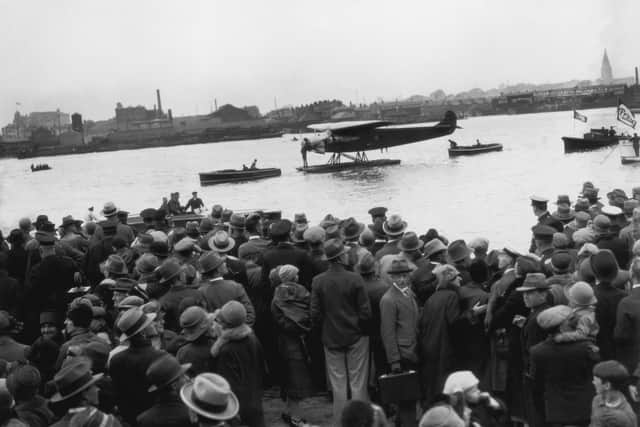

Advertisement
Hide AdAdvertisement
Hide AdShe remarked: “I made up my mind to go ahead and even when I noticed a leakage of gasoline which began to trickle down my neck, I knew that the only course open to me was to go onward.
“To make matters worse I ran into a rather severe storm, but I still pushed on without giving way to despair.
“The leakage did not greatly worry me, because I had confidence in my machine, and you will agree that confidence was not misplaced.”
Miss Earhart added that she was 700 miles off Harbour Grace when she encountered the storm, which interfered to some extent with her time calculations, “but not materially”.
Advertisement
Hide AdAdvertisement
Hide AdShe thought she could claim she had done fairly well, “all things”.
Nearing the coast of Ireland, she sighted a vessel and circled round it thinking she would be recognised.
The vessel whistled, and something like a rocket went off.
She was under the impression that perhaps there was a radio on board, and that her coming would be announced.
However, that was not so. That was the only vessel she had sighted on her flight.
Advertisement
Hide AdAdvertisement
Hide Ad“I was very glad to see dawn,” Miss Earhart proceeded, “but I realised I had still a long way to go, and I kept steadily on my course.”
Owing to the leakage of gasoline and the defect in the exhaust she abandoned any thought she might previously entertained of reaching Paris, and decided to make a landing in Ireland.
The coast she first sighted appeared to be about the middle of Ireland.
She had been trying to locate the airport at Valencia in Co Kerry, but she had lost her bearings, and had flown too far north. However, she picked out a railway track (presumably the Great Northern Railway), and followed it closely “until it brought me to this place you call Londonderry”. She added: “Indeed. I have hardly got my bearings yet.”
Advertisement
Hide AdAdvertisement
Hide AdA bystander informed Miss Earhart that she was in north-west Ireland, “and amongst friends”, and she remarked smilingly, “Oh, I have no doubt at all about your friendliness. I have had proof of it already. Everyone has been so kind.”
Speaking after arriving at the Northern Counties Hotel later that evening she told the press: “I just did this flight for fun. Don’t you think my husband is a good sport. He does not interfere with my flying, and I do not interfere with his publishing. He was willing that I should go if I had confidence in myself. Of course, you cannot be sure of anything, but I felt there was a chance of making it.”
‘PRIDE OF THE NATION’
Congratulations where quick to fly across the Atlantic via cablegram. The first that she received was from her husband, Mr Putnam, who spoke of his pride in her “wonderful achievement”.
Very soon after came a cablegram from the President of the US, Herbert Clark Hoover, in the following terms: “I voice the pride of the nation in congratulating you most heartily upon achieving the splendid pioneer solo fight for a woman across the Atlantic Ocean, but also the capability of women to match the skill of men in carrying through the most difficult feats of high adventure.”
Almost at the same time there arrived a message from Mr J B Ely, Governor of Massachusetts, saying: “Massachusetts is proud of you.”
Comment Guidelines
National World encourages reader discussion on our stories. User feedback, insights and back-and-forth exchanges add a rich layer of context to reporting. Please review our Community Guidelines before commenting.